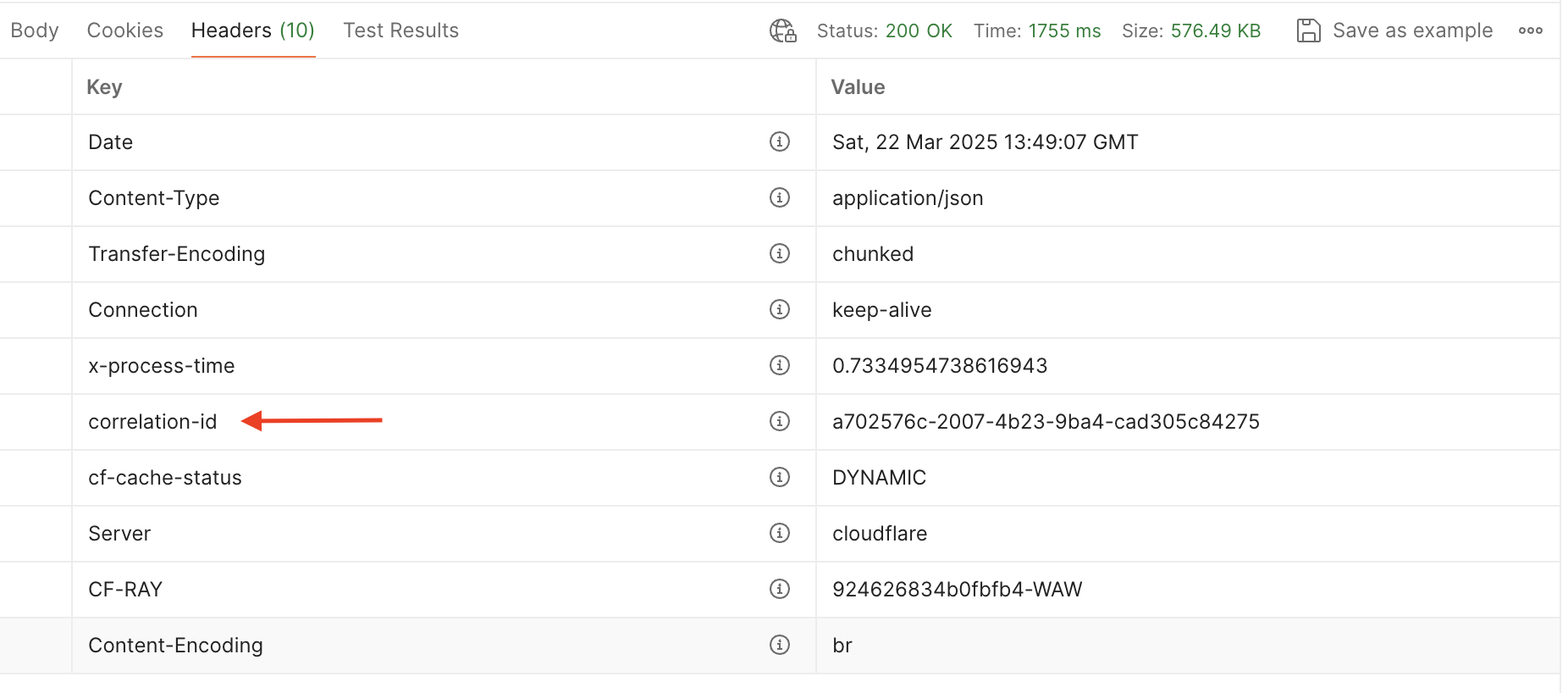Troubleshooting
Request tracing with correlation IDs
Learn how to use correlation IDs to debug and troubleshoot API requests
In a distributed system like NewsCatcher, tracing requests across multiple
services is essential for effective troubleshooting. This guide explains how
correlation IDs work and how to use them to resolve issues quickly.
In the NewsCatcher APIs, correlation IDs appear in:
What is a correlation ID?
A correlation ID is a unique identifier assigned to every request that enters our system. This ID follows the request through all microservices and appears in logs across our infrastructure, enabling end-to-end request tracing.Think of a correlation ID as a tracking number for your API request - it lets
you and our support team follow the request’s journey through our entire
system.
- HTTP response headers as
correlation-id - Internal logs across our Kubernetes infrastructure
- Error tracking systems
Why correlation IDs matter
Faster support resolution
When reporting issues to our support team, including the correlation ID allows us to immediately locate all relevant logs and trace the exact path your request took through our systems. This dramatically speeds up troubleshooting and resolution times.End-to-end request visibility
In complex operations that touch multiple services (search, filtering, aggregation, etc.), correlation IDs let us reconstruct the complete journey of your request and identify exactly where problems occurred.Performance analysis
For requests with unexpected latency, correlation IDs help us analyze and optimize performance by measuring exactly how long each step in processing took.How to use correlation IDs
1
Find your correlation ID in response headers
Every response from the NewsCatcher API includes a  Example correlation ID:
Example correlation ID:
correlation-id in the HTTP headers. You can view this:- In your HTTP client’s response headers
- In programming language responses by accessing the headers collection
- In Postman under the Headers tab of the response

a702576c-2007-4b23-9ba4-cad305c842752
Include your correlation IDs in support requests
When contacting our support team about an API issue, always include:
- The complete correlation ID from the response headers
- The approximate time the request was made
- A brief description of the expected vs. actual behavior
Without the correlation ID, debugging process would require much more
back-and-forth and manual searching through logs.
Correlation IDs and support SLAs
Providing a correlation ID when reporting issues helps us meet our service level agreements (SLAs) for support response times. According to our Service Support Policy, we have defined target response times based on issue priority:- Priority 1 (Critical): 1 hour
- Priority 2 (Significant): 4 hours
- Priority 3 (Moderate): 12 hours
- Priority 4 (Minor): 1 business day
For Priority 1 issues (complete service unavailability), please contact
support by phone at +33625707180 in addition to submitting a ticket with the
correlation ID to ensure immediate attention.
Best practices
Log correlation IDs
Always include correlation IDs in your own application logs when making
requests to our APIs.
Report with correlation IDs
Always include correlation IDs when reporting issues to our support team.
Include in error reporting
Integrate correlation ID extraction into your application’s error handling
logic.
Keep for later reference
Consider storing correlation IDs for important requests temporarily for
easier troubleshooting.

